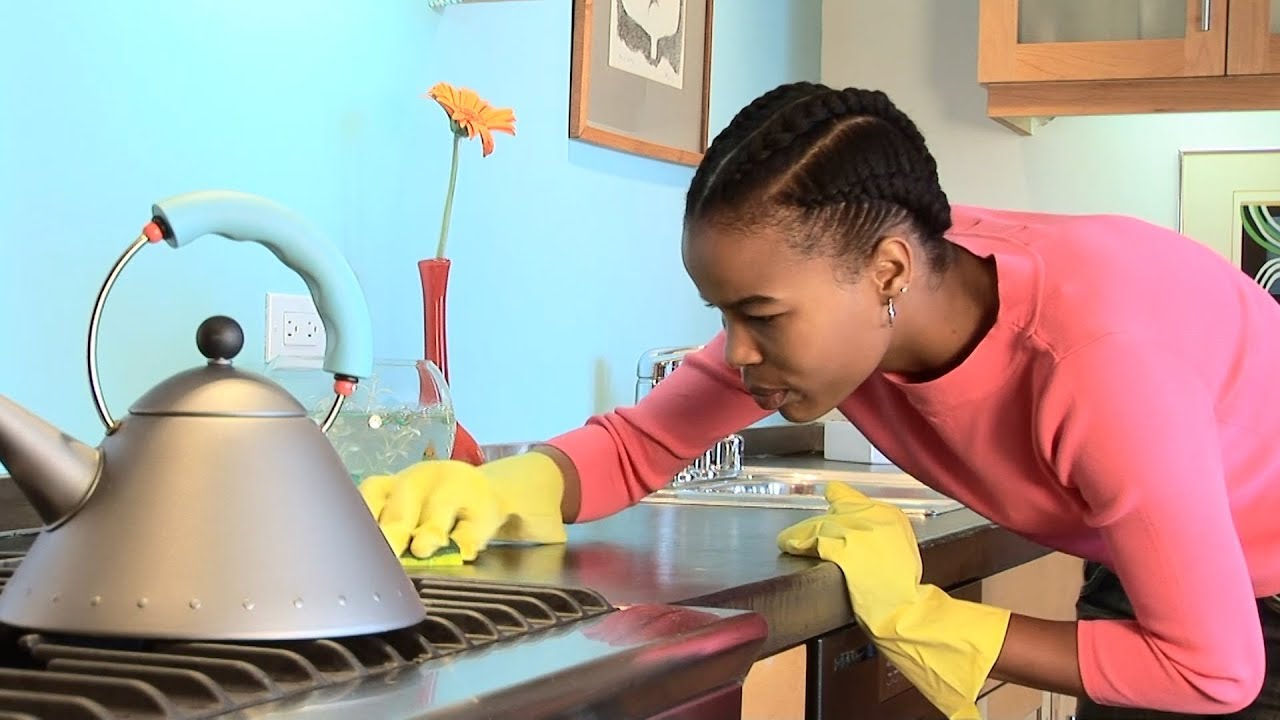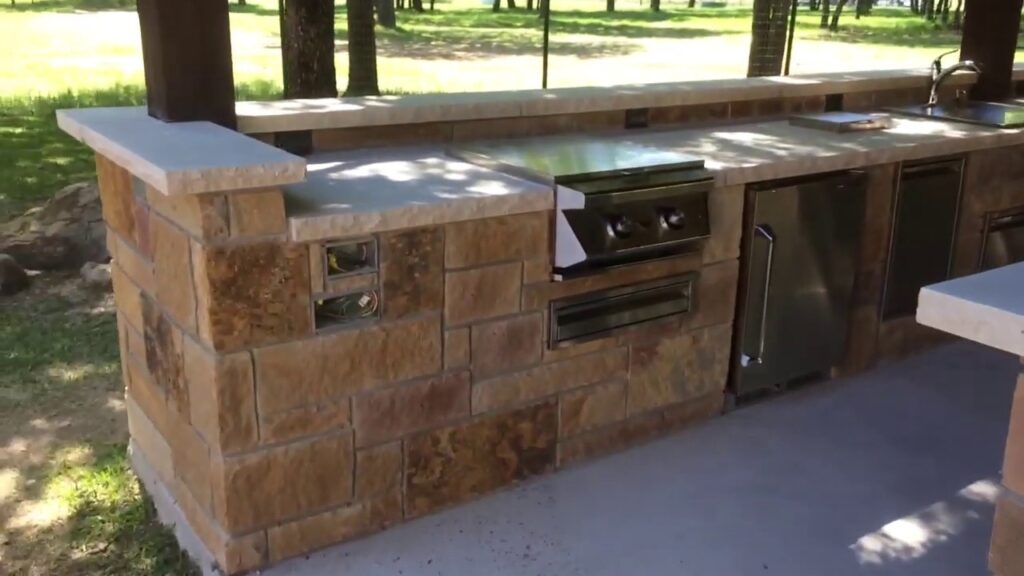If you’re wondering how to design an outdoor kitchen, you’ve come to the right place. We’ll cover Material selection, Layout options, and how to add a wood-fired oven. After reading our guide to the best outdoor kitchens, you’ll be well on your way to creating your dream space. But before we get started, here are some important considerations. You’ll be glad you read it.
Considerations for planning an outdoor kitchen
There are many factors to consider when planning an outdoor kitchen. Firstly, it is important to choose materials that are low maintenance and are resistant to extreme weather conditions. For example, stainless steel, non-porous surfaces and teak wood are ideal materials for outdoor kitchens. You may also want to consider using High Density Polyethylene Wicker (HDPE) for outdoor kitchen furniture. Stainless steel and cultured granite are both ideal materials for outdoor kitchen countertops, but they require regular sealing. It is important to consider the climate in your area, as a kitchen may need to endure rain, snow and high temperatures.
Size and layout are two other important factors to consider when planning an outdoor kitchen. For a small space, a single row of cabinetry is sufficient, while a U-shaped layout is better for larger areas. Moreover, some types of outdoor kitchens are restricted by access points, deck size and other factors. Therefore, it is imperative to plan a layout that fits within these constraints and maximizes the use of available space.
Where to place your outdoor kitchen depends on your lifestyle and your budget. Many homeowners choose a location outside the back of the house, where it’s easier to install utility lines. The placement is essential because it can also serve as an additional living space. It’s important to balance aesthetics and practicality. Considerations for planning an outdoor kitchen vary from household to household, but in most cases, the ideal location is somewhere where you can comfortably cook and entertain guests.
Materials to consider
There are many different materials to consider when designing an outdoor kitchen. Not only should your outdoor kitchen look good, but it should also withstand extreme weather conditions. Stainless steel is a popular choice for outdoor kitchens, as it will not rust or chip and is easy to maintain. However, you should make sure to choose a material that can withstand the heat and UV exposure. Wood countertops are an elegant addition to any outdoor kitchen and bring interior decorating elements outside.
While many people prefer natural stone and tile for their outdoor kitchens, this can cause it to bend under extreme weather conditions. If your outdoor kitchen is located in a coastal area, consider using materials that will not be affected by extreme weather. Also, consider adding task lighting to the outdoor kitchen. This lighting will light the cabinets, dining area, and cooking surface. You may also want to consider installing outdoor appliances, such as a gas or electric grill, or a brick oven.
When planning your outdoor kitchen, you should keep in mind the type of weather-resistant materials you will use. Choose materials that are not porous and will not rust. Additionally, make sure the materials are easy to clean so you’ll have more time to enjoy your outdoor kitchen. You can also coordinate your kitchen’s design with your home’s style and architecture. For example, a contemporary home may have clean lines while an ornate home may have ornate details.
Layout options
There are several layout options for your outdoor kitchen. These layouts provide ample counter space and can be used to accommodate multiple cooks. For the best efficiency, consider the L-shaped layout. This design provides workspace along two adjacent walls. The L-shape design can also be used to include an island to create more counter space and to interact with guests. This layout works best with a larger outdoor kitchen. For more information on outdoor kitchen layouts, visit our Outdoor Kitchen Photo Gallery.
When it comes to layout options, you can take a letter-based approach. This design is based on the letters of the alphabet and features a cooking space, storage areas, and other amenities. It also incorporates related hardscapes, such as a seating area. A basic L-shape layout can be used to fit a small space, and an L-shaped kitchen is an incredibly flexible design that can be customized to accommodate your preferences and space.
U-shaped layouts are a classic example of a modular kitchen. These layouts feature three lines of cabinets and ample counter space for food preparation, cooking, and serving. These designs are ideal for large outdoor kitchens, but may need to be modified slightly for space. Make sure to include a vent or other method for venting smoke. Also consider whether you plan on placing additional appliances. If so, consider how much space you need to create an outdoor kitchen.
Adding a wood-fired oven
When you add a wood-fired oven to your outdoor kitchen, you’ll be surprised at just how versatile it is. You can cook everything from bread to roasting meat. And your guests will love watching the process! You’ll even have more space for garden parties and cooking shows. Whether you’re looking for a portable oven or a stationary oven, an outdoor wood-burning oven will help you create an entertaining space.
Before installing your oven, make sure you have a solid base that can support the weight of the oven. Then, you can either build on the wall of your house or separate a separate area for cooking. You can install a small chimney to vent the smoke upwards. A mobile wood-fired oven is also an option, and can have castors or a compartment for organizing logs.
While you can use either gas or wood to fuel your oven, a hybrid oven allows you to choose which is best for your outdoor kitchen. Alfa makes mobile outdoor ovens with Forninox TM technology, which combines a stainless-steel dome with a refractory cooking floor to maximize heat efficiency while reducing weight. This design can also be used for cooking foods that require the highest level of moisture and flavor.
Adding a sink
Adding a sink to your outdoor kitchen offers a number of benefits. It allows you to wash up food and drink items and doubles as a chopping board or lid when not in use. A well-designed sink will make the most of limited space, and can make a kitchen outdoors much more efficient and functional. It can also add value to your outdoor living space by attracting more guests. Read on to learn more about the many benefits of adding a sink to your outdoor kitchen.
If you have water, you’ll want to plan for drainage. You can connect your outdoor kitchen to your home’s sewage system, use a French drain, or dig a dry well to catch water. If you have a garbage disposal, you can connect the sink to it to eliminate additional expenses for garbage pickup. Before installing a sink, make sure to check with your local building codes. Some areas require a building permit or require you to hire a plumber to make certain connections.
If you’re building a new outdoor kitchen, plumbing is an important consideration. You might want to hire a contractor to help you with installation. A contractor can recommend the best place for the plumbing, how to prevent freezing during the winter, and whether or not you’ll need to secure permits. If you’re an intermediate do-it-yourselfer, an under-mount sink is an ideal choice.
Adding a seating area
If you’d like to expand your outdoor kitchen into the backyard, consider adding a seating area. Whether you’re looking to add a dining table and chairs or a bar-height space, having seating can make the kitchen feel more comfortable and inviting. You can install seating at the countertop, or create a separate seating area that faces the kitchen. Either way, you’ll have more room for counter space.
When designing your outdoor kitchen, keep in mind the different types of cooking surfaces you’ll need. If you have a grill, a built-in niche can provide a place for it when it’s not in use. For a freestanding outdoor kitchen, consider adding an electrical outlet near the main cooking area, which can extend its use into the evening. Adding an additional outlet near a seating area can also make it easier to use your outdoor kitchen at night and bring your entertainment out.
If you want to build a seating area, you can add it to a standard outdoor kitchen. This design is most common among outdoor kitchens, but you can also build an outdoor kitchen that’s completely custom. A custom-made outdoor kitchen can be very expensive, but it’s worth every penny. It will provide you with many benefits, including a relaxing, comfortable area for friends and family to gather and have meals.

